Warning: Undefined array key "file" in /data/wordpress/htdocs/wordpress/wp-includes/media.php on line 1676
The power of example: the City of Helsinki and the John Nurminen Foundation reach for major reductions in the nutrient load of the Baltic Sea, and international cooperation for the efficient reduction of nutrient discharges
The John Nurminen Foundation is about to launch two major projects in the near future: BEST (Better Efficiency for Sewage Treatment), a project focusing on the treatment of industrial wastewaters, and NutriTrade, a project that seeks to create a voluntary nutrient trading platform. The City of Helsinki is the main partner of the BEST project, and will also pilot the NutriTrade project.
The sun was shining on 20 August, when the John Nurminen Foundation and the City of Helsinki hosted the Clean Baltic Sea event at Harakka Island, allowing the hundred or so invited guests to see the island at its best and get to know both its nature and activities. One of the event’s main themes was Finnish-Polish cooperation involving the Baltic Sea, and the event also celebrated, with encouragement from the Polish Embassy, Poland’s newly-established presidency of the Council of the Baltic Sea States.
“What happens in the densely-populated Poland is a matter of life and death for the Baltic Sea.’ Juha Nurminen, Chairman of the John Nurminen Foundation Board of Directors
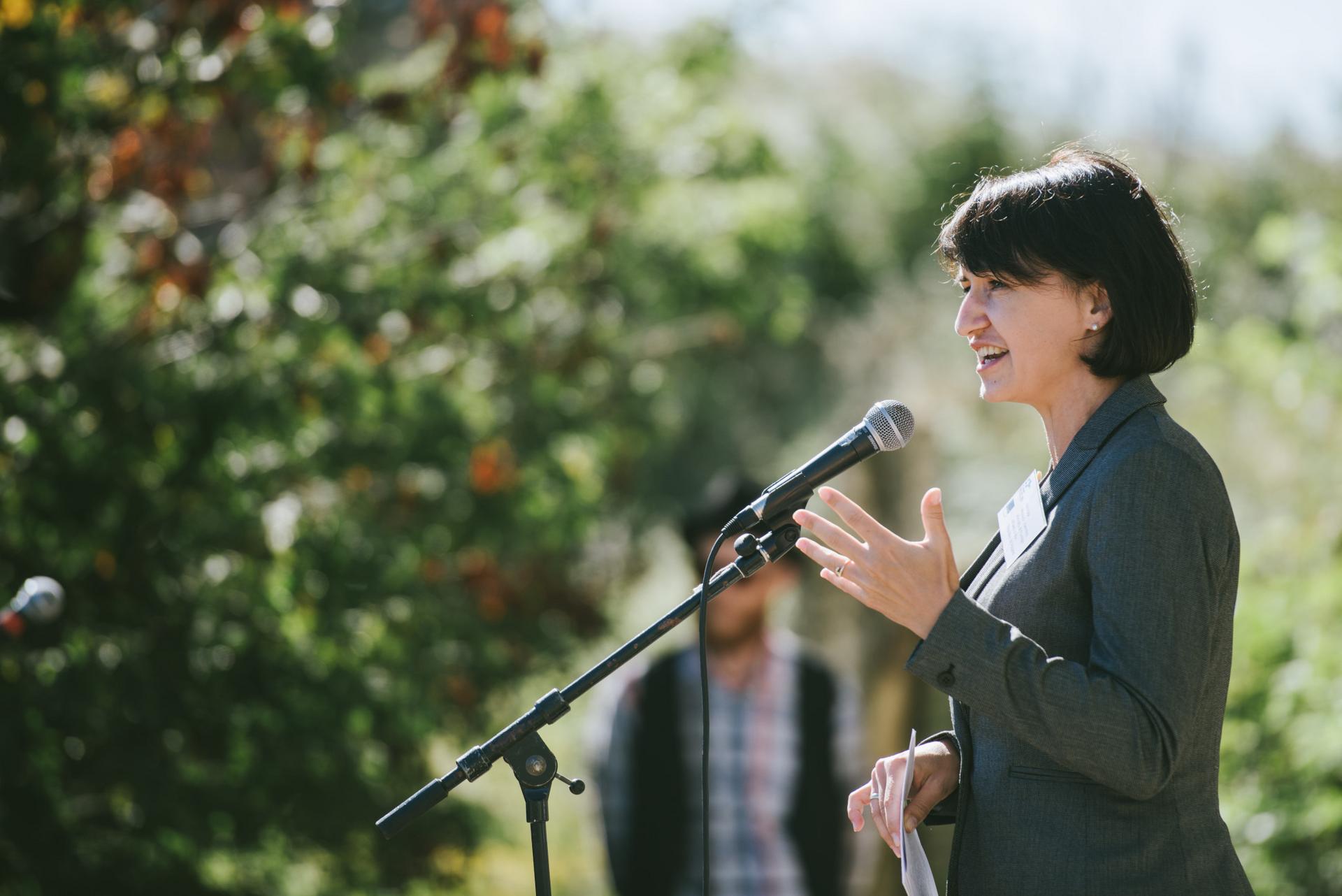 Photo: Henryka Moscicka-Dendys, guest of honour of the Polish Embassy and main speaker of the event, called for new entrepreneurship and new ways of working, not only in the environmental but also in the financial sector; she also promised that Poland will do its utmost to make sure its presidency will not consist of mere words. We are determined to work for this goal all through the year. Themes of the one-year presidency include sustainable development, culture as a factor that strengthens the society and the economy, and security.
Photo: Henryka Moscicka-Dendys, guest of honour of the Polish Embassy and main speaker of the event, called for new entrepreneurship and new ways of working, not only in the environmental but also in the financial sector; she also promised that Poland will do its utmost to make sure its presidency will not consist of mere words. We are determined to work for this goal all through the year. Themes of the one-year presidency include sustainable development, culture as a factor that strengthens the society and the economy, and security.
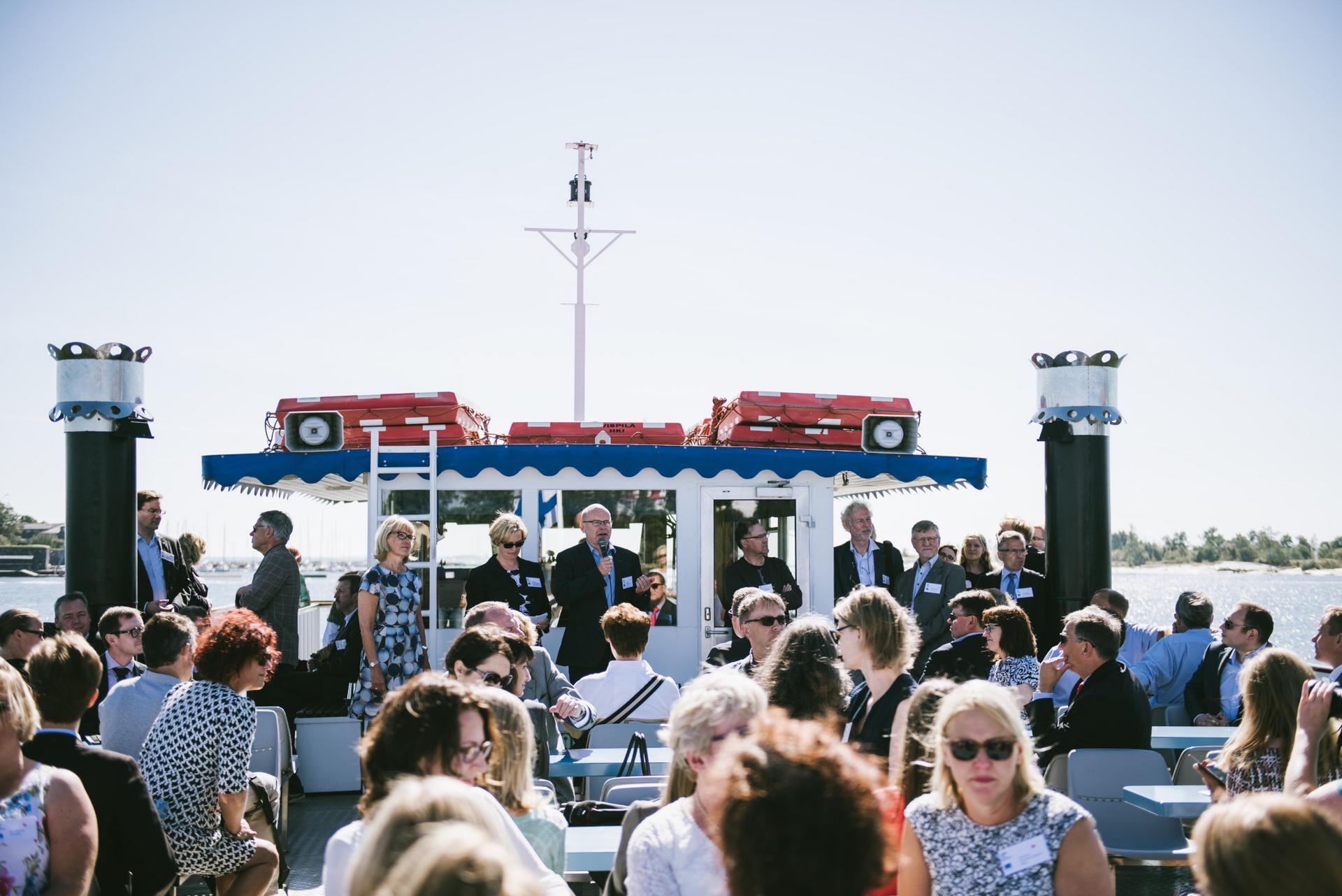 Photo: On the way to Harakka, Esa Nikunen, Director General for the Environment Centre of Helsinki since last May, presented himself, speaking, in addition to naval affairs, of the city’s targets for carbon neutrality and the environmental centre’s vast scope of responsibilities from food safety to the protection of animals. Päivi Kippo-Edlund, Director of Environmental Protection, spoke of the international operations and various projects of the Environment Centre. The interview was conducted by Annamari Arrakoski-Engardt, Secretary General of the John Nurminen Foundation.
Photo: On the way to Harakka, Esa Nikunen, Director General for the Environment Centre of Helsinki since last May, presented himself, speaking, in addition to naval affairs, of the city’s targets for carbon neutrality and the environmental centre’s vast scope of responsibilities from food safety to the protection of animals. Päivi Kippo-Edlund, Director of Environmental Protection, spoke of the international operations and various projects of the Environment Centre. The interview was conducted by Annamari Arrakoski-Engardt, Secretary General of the John Nurminen Foundation.
Eight years ago, Helsinki launched the Baltic Sea Challenge together with the city of Turku; the initiative was motivated by concern for the status of the Baltic Sea and its nearby waters, and by the perception of the sea as a crucial feature of the city’s competitive edge. Through the Baltic Sea Challenge, the cities of Helsinki and Turku implement their joint action plan that aims at reducing the load generated by the cities themselves, and set up a network of partners in order to encourage other stakeholders to take part in water protection.
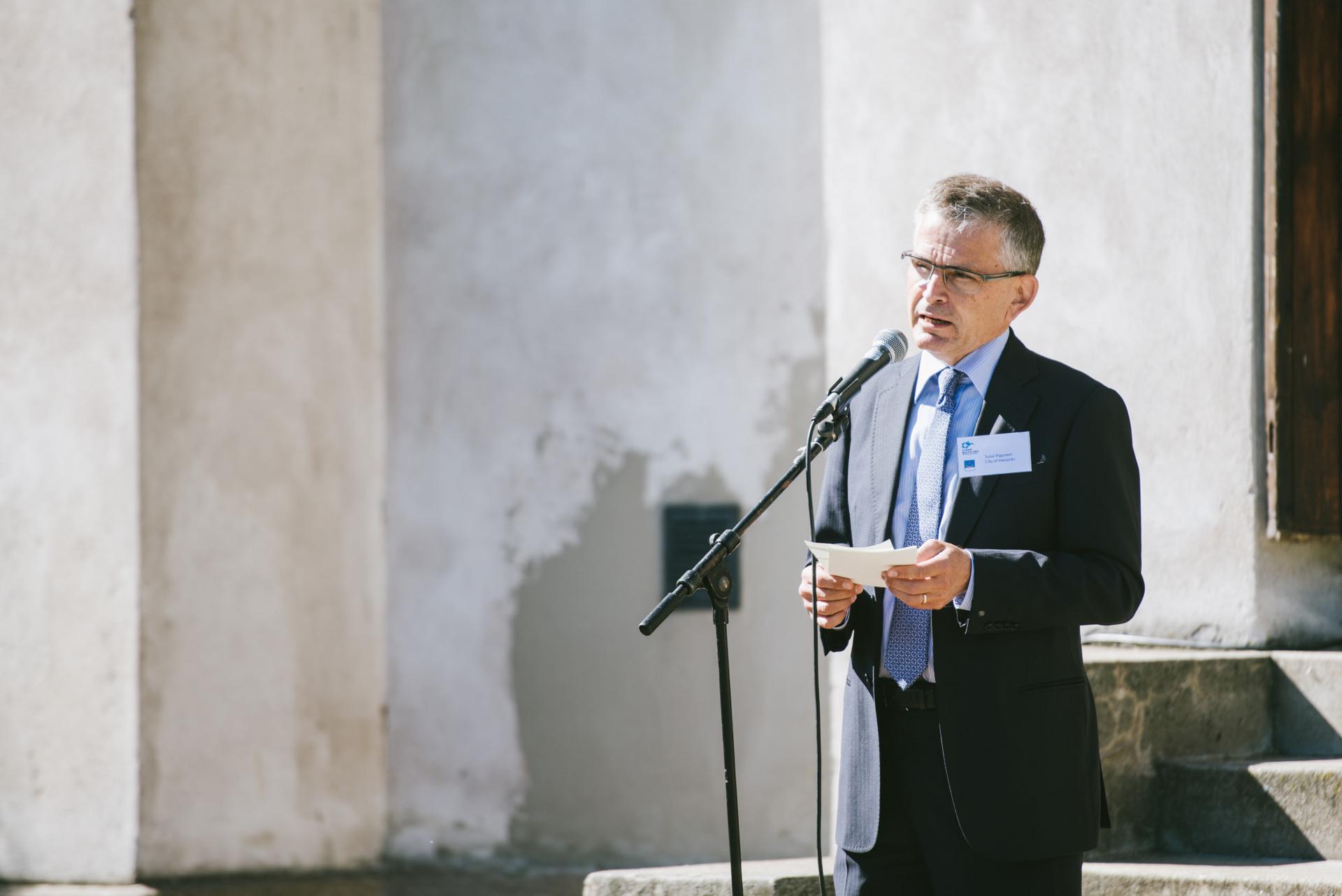 Photo: According to Mayor Jussi Pajunen, municipalities bear a great responsibility for the status of the waters in their area, but also possess a great opportunity for demonstrating how we can go beyond the minimum required by law, and be an exemplary water protector within our purview – from wastewater treatment, harbour operations and city planning to farming and the maintenance of recreational areas.
Photo: According to Mayor Jussi Pajunen, municipalities bear a great responsibility for the status of the waters in their area, but also possess a great opportunity for demonstrating how we can go beyond the minimum required by law, and be an exemplary water protector within our purview – from wastewater treatment, harbour operations and city planning to farming and the maintenance of recreational areas.
Moreover, by creating new partnerships and strengthening the existing ones, we have been able to create many new things, such as the professorship for the economics of Baltic Sea protection at the University of Helsinki, donated by the City of Helsinki, and the EU-funded joint projects with the John Nurminen Foundation and our partners from the Baltic states and Poland.
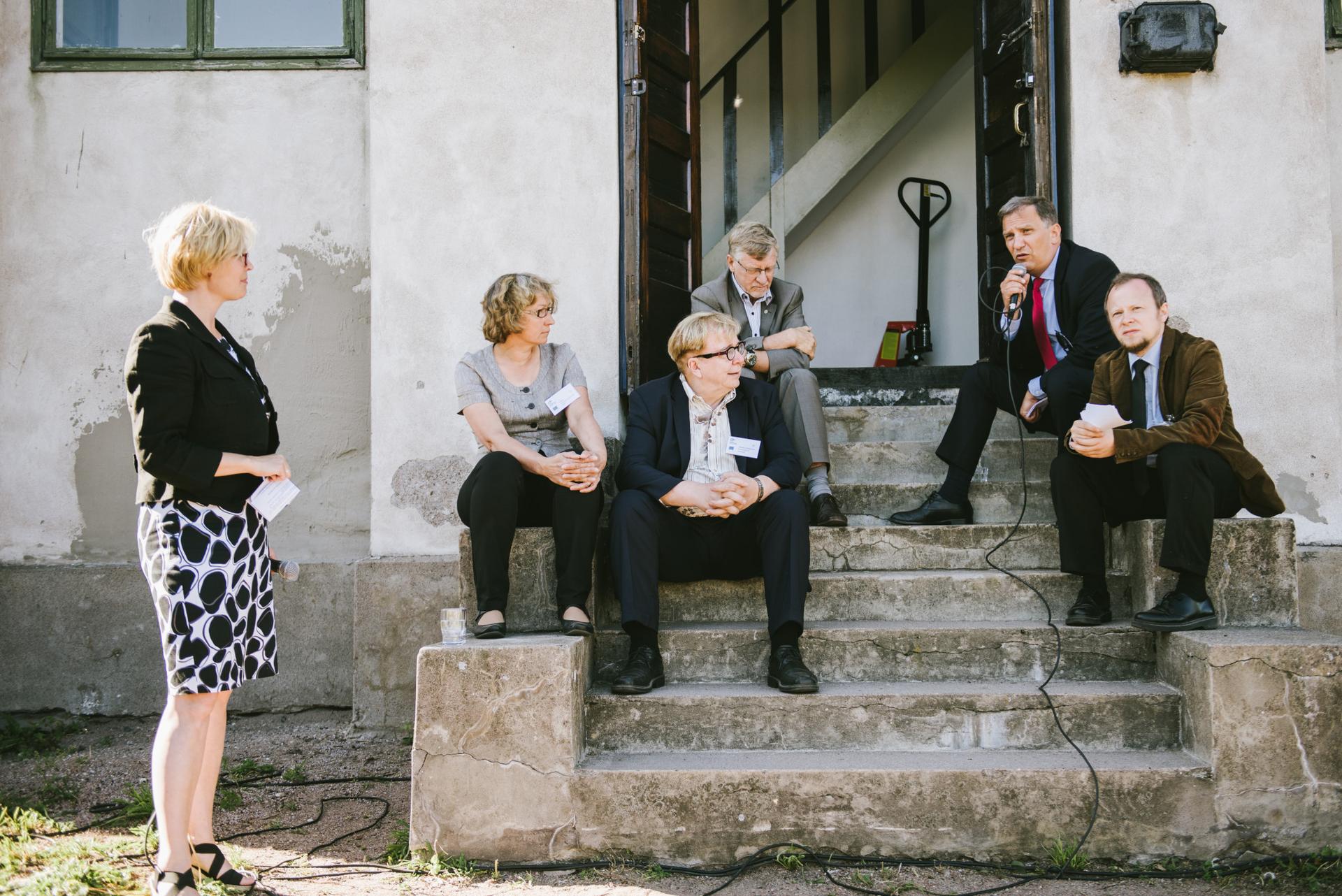 Photo: From left, Annamari Arrakoski-Engardt, Secretary General of the Foundation, who led the discussion; Päivi Salpakivi-Salomaa, Vice President, UPM Environment; Juha Nurminen, Chairman of the Board of the Foundation; Jacek Skarbek, in charge of the water and wastewater infrastructure of Gdansk, and Andrzej Podscianski, representing the Polish national water management authority. Podscianski was happy to see the collaboration moving ahead, and said that Poland has already succeeded in removing 32 targets from HELCOM’s hot spot list in the past few years. He also mentioned the gypsum piles that have been a hot topic recently, and promised that a study on their discharges had been initiated in Poland during the summer. Skarbek, on the other hand, explained that Gdansk seeks for solutions not only for the treatment of the city’s wastewaters, but also for waters from smaller villages.
Photo: From left, Annamari Arrakoski-Engardt, Secretary General of the Foundation, who led the discussion; Päivi Salpakivi-Salomaa, Vice President, UPM Environment; Juha Nurminen, Chairman of the Board of the Foundation; Jacek Skarbek, in charge of the water and wastewater infrastructure of Gdansk, and Andrzej Podscianski, representing the Polish national water management authority. Podscianski was happy to see the collaboration moving ahead, and said that Poland has already succeeded in removing 32 targets from HELCOM’s hot spot list in the past few years. He also mentioned the gypsum piles that have been a hot topic recently, and promised that a study on their discharges had been initiated in Poland during the summer. Skarbek, on the other hand, explained that Gdansk seeks for solutions not only for the treatment of the city’s wastewaters, but also for waters from smaller villages.
Partners and precursors
At the event’s main panel, Juha Nurminen said that the Foundation will continue to work for the reduction of nutrient discharges from wastewaters, using new methods as well as lessons learned from already successfully completed projects.
The BEST project will create a ‘green list’ of cities and water utilities who have achieved exemplary results in wastewater treatment through voluntary measures. The responsible and far-reaching work carried out in coastal municipalities, in particular, serves as an encouraging example to the other municipalities and political decision-makers of the region. Hopefully, the positive example will lead to new stakeholders taking up concrete action.
Experts from these pioneering water utilities, such as Helsinki, Warsaw and Gdansk, provide other municipal treatment plants with expert help, motivating and activating the plants to reach more and more demanding environmental objectives. Based on their experiences, the participating water utilities will exchange information with each other on the most efficient methods of treating wastewater. The information will be passed on via the networks of water utility organisations and the Baltic Sea Challenge network, created by the cities of Helsinki and Turku.
The BEST project will conduct a survey on the treatment of nutrients and harmful substances at a dozen or so treatment plants; survey results will be used to make concrete recommendations for future actions. Moreover, the project will study how to control great volumes of water and subsequent runoff during storms and heavy rains. A third project deliverable will be a proposal for actions on how to improve treatment results when industrial wastewaters are treated by municipal treatment plants. Cooperation practices involving municipal authorities, industrial companies and wastewater treatment plants will also be developed with the goal of optimizing the treatment process.
All concrete measures are welcome to the NutriTrade nutrient trading platform
The NutriTrade project will implement well-researched and verified measures that can reduce the volume of nutrients in the Baltic Sea cost-efficiently and fast. The goal is to create a permanent mechanism for identifying, financing and implementing such measures.
The main idea is that those who buy the nutrient discharges are volunteers, financing dedicated measures that reduce the nutrient load. Cities, municipalities, private companies and citizens can neutralize their phosphorus footprints by financing a target where nutrients can be removed with methods that are cost-efficient and verifiable. The other party, or the recipient of the funding, will be a stakeholder who is ready to reduce nutrient loads to the Baltic Sea through their own, clearly measurable actions, but who lacks the required funding. Helsinki, for example, a city from which a small amounts of nutrients are discharged to the sea even after extremely efficient treatment, and from whose fields and parks some nutrients cannot be stopped from entering the sea as non-point load, has chosen to become the patron of a target in Belarus: this way, Helsinki can neutralize the phosphorus footprint of its own treated wastewaters.
There are also domestic means for the efficient reduction of nutrients, including, for example, treating fields with gypsum, and fishing cyprinid fish.
At the panel, Markku Ollikainen, Professor of Environmental and Resource Economics at the University of Helsinki, stated that the gypsum treatment of fields in Finland is a ground-breaking new method of reducing discharges from agriculture. Research results indicate that gypsum treatment could cut the phosphorus load from agriculture to the Archipelago Sea immediately by nearly a third, which would have a visible impact on the status of the Archipelago Sea. The cost of treating all the clay fields of the coastal areas of the Archipelago Sea and the Gulf of Finland with gypsum would be only 11 million euros per year. Finland and Finnish farmers could be the first in the world to achieve a significant reduction in the nutrient loads originating from agriculture. Ollikainen believes this nutrient-smart method has export potential.
Juha Nurminen told the audience that the Foundation has already initiated the Local Fishing project in the Archipelago Sea: the goal of this project is to build, within the span of three years, a market-driven mechanism for introducing cyprinid fish to the consumers’ dinner tables. At the same time, a considerable amount of nutrients is recycled from sea to land. Municipalities in the Turku area have already committed to introducing Local Fishing products to the menus of their institutional kitchens.
Päivi Salpakivi-Salomaa from UPM explained that UPM will also participate in the NutriTrade project by partnering with the John Nurminen Foundation and developing a system that allows the forest industry to benefit from the surplus nutrients of other sectors. She also mentioned that UPM’s experiences of sharing treatment facilities with municipalities had been extremely positive. In Rauma, Finland, wastewaters from the city and the forest industry are directed to the same treatment plant, which not only generates cost savings but also reduces the total nutrient load of the Baltic Sea. This kind of nutrient exchange benefits the environment and, at the same time, saves both resources and money.
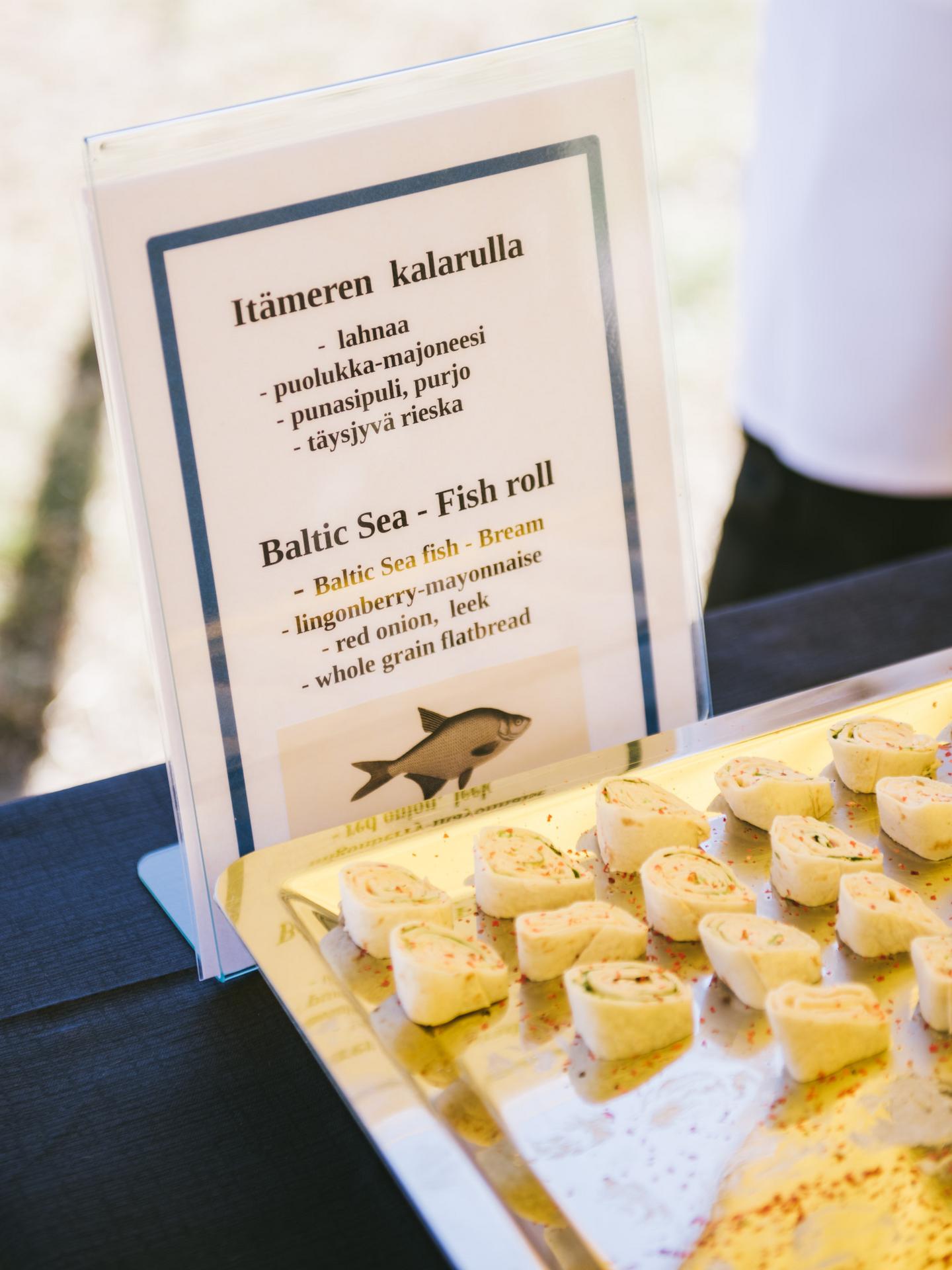 Photo: Visitors on Harakka were treated to local fishing delicacies, created from bream fished in the Archipelago Sea. The ingredients of the bream dumpling were selected by top chef Markus Maulavirta. Guests also enjoyed the warm patties prepared by Kalaliike S. Wallin from Turku. They are already available at the Turku Market Hall.
Photo: Visitors on Harakka were treated to local fishing delicacies, created from bream fished in the Archipelago Sea. The ingredients of the bream dumpling were selected by top chef Markus Maulavirta. Guests also enjoyed the warm patties prepared by Kalaliike S. Wallin from Turku. They are already available at the Turku Market Hall.
Info sessions at the Harakka artist studios – former chemistry laboratories of the Defence Forces – also informed the audience of the wonderful plans and visions Helsinki has for developing its marine side. As time was scarce, we only heard the tip of the iceberg on these themes; in the future, the Foundation will organise an event where the general public can learn about the great things envisioned by city architect Christina Suomi, and docent Mikko Huhtamies from the University of Helsinki.
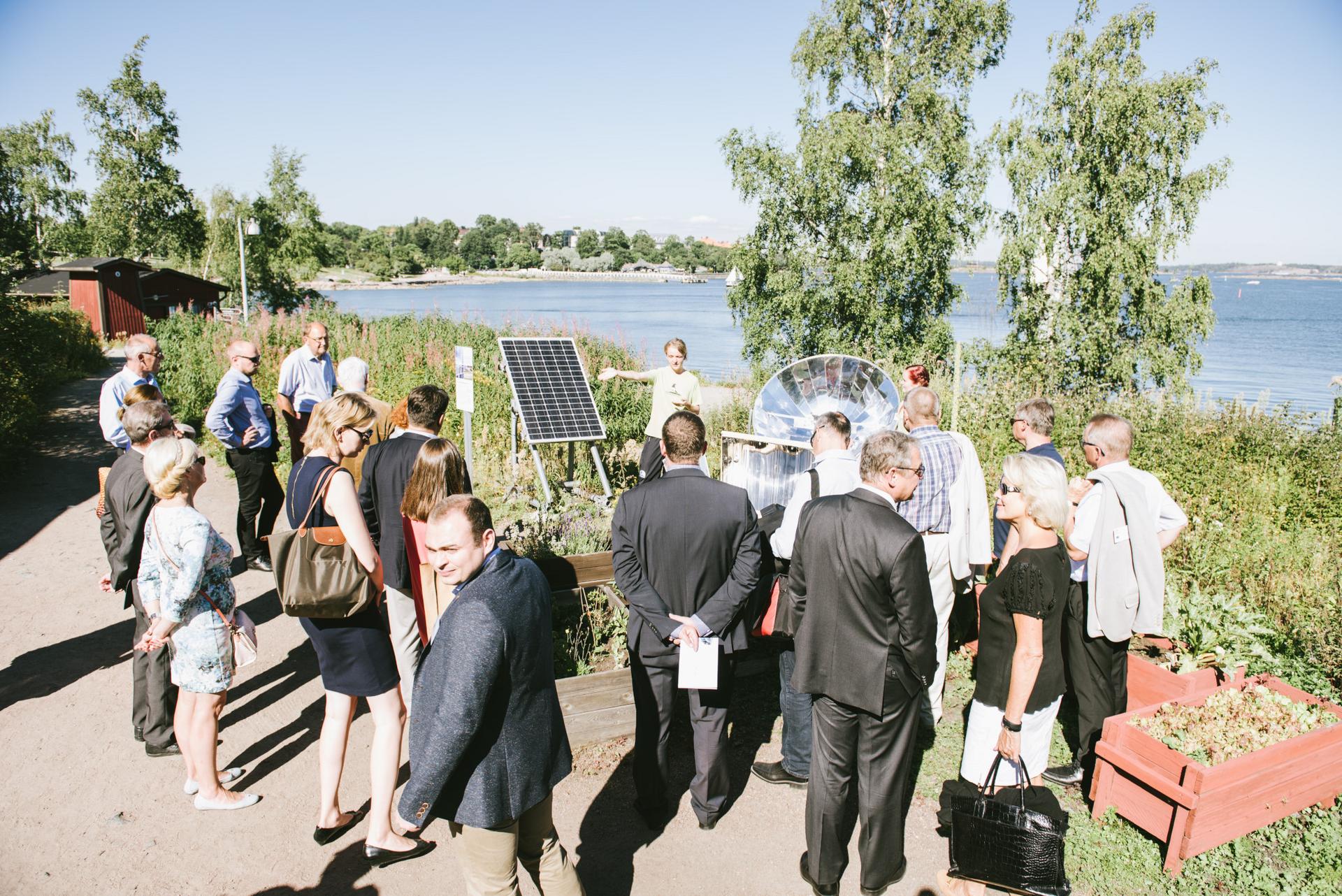 Photo: Harakka’s nature is particularly rich, and the island is now home to a Nature House, which is open for all, exhibition spaces, and artists’ studios, located in old wooden barracks, ammunition casemates, and the Defence Forces’ former research centre for chemistry. Kaisa Paajanen, head of the Nature House in Harakka, explained that operations on the island are carbon-neutral. With its small wind turbine, solar power collector for warm water, solar fan for indoor air, a solar panel that generates energy, and a solar oven and grill, ideal for preparing slow food, the island is an excellent laboratory. Harakka’s unique milieu and interesting history made a lasting impression on the guests. Many of the visitors, even the ones who live in Helsinki, visited the island for the first time: they said they were sure to come back.
Photo: Harakka’s nature is particularly rich, and the island is now home to a Nature House, which is open for all, exhibition spaces, and artists’ studios, located in old wooden barracks, ammunition casemates, and the Defence Forces’ former research centre for chemistry. Kaisa Paajanen, head of the Nature House in Harakka, explained that operations on the island are carbon-neutral. With its small wind turbine, solar power collector for warm water, solar fan for indoor air, a solar panel that generates energy, and a solar oven and grill, ideal for preparing slow food, the island is an excellent laboratory. Harakka’s unique milieu and interesting history made a lasting impression on the guests. Many of the visitors, even the ones who live in Helsinki, visited the island for the first time: they said they were sure to come back.
Thanks to everyone on Harakka for a memorable afternoon!
Photos: Ilkka Vuorinen.
